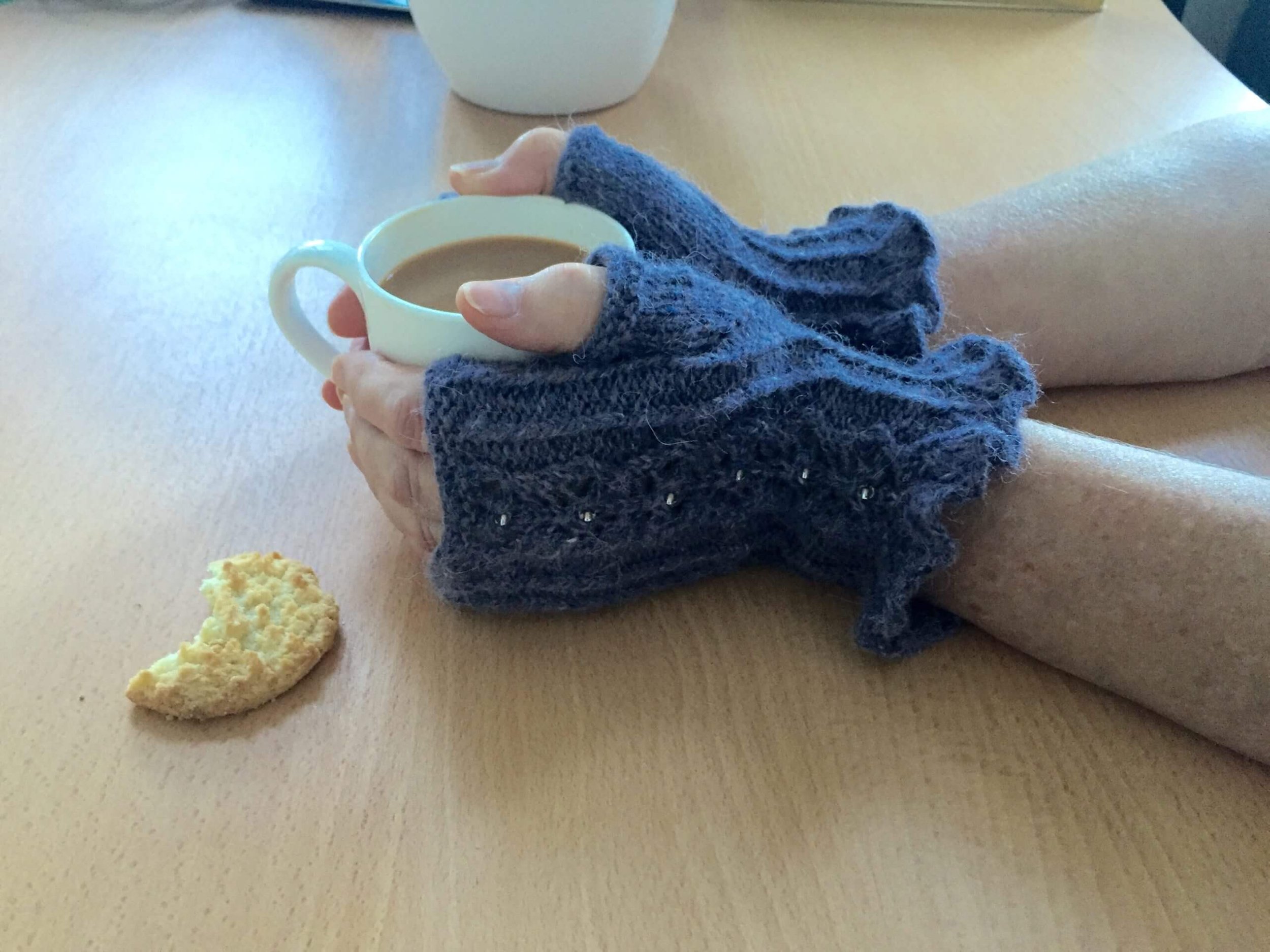How to Knit with Magic Loop
Magic loop technique is a great way to knit small tubular projects in the round (such as mitts/gloves, socks, sleeves or hats ) and with just a single circular needle.
I’ve been using magic loop to knit a hat (Siskin Hat coming soon!), and knitting with Magic Loop will save having to swap out to double pointed needles (DPNs) as the circumference/number if stitches becomes considerably smaller when shaping the crown.
In this tutorial I share how I got started with this project hat and cover 3 helpful techniques:
Old Norwegian/Twisted German cast on on
Getting set up with magic loop
plus how to make an invisible join to get started knitting in the round
We’ll also look at what magic loop is, and when you might want to use this technique over other options for knitting in the round.
If you want to knit a hat in the round with a neat and functional edge, and without having to use multiple needles this Magic Loop knitting tutorial is for you.
What is knitting Magic Loop knitting?
Magic loop knitting is a way of knitting in the round that enable you to work on projects with a small circumference, such as socks, mitts etc using just a single long needle (needs to be min 32in /80cm and use Magic Loop technique.
Other options for small circumference knitting include using:
a set of double pointed needles (dpns) for the smaller parts if the jumper
a short circular needle
2 short circular needles
The key when knitting in the round is you cannot use a needle that is longer than the circumference of the tube of knitting, and/or one that is too short to accommodate the number of stitches you have. For more about circular needles and choosing what length you need, check out my blog post here.
I like to keep things simple and use the same circular needles for most of my projects, whether knitted flat or in the round. To knit with Magic Loop you will need a fairly long needle - 80cm (32in) would be about the shortest length you’d want to use and is great for small knits such as mitts or socks. Anything above 120cm (47in) would leave you too much spare cable to grapple with. On the whole I find that a 100cm (40in) needle works well enough for most projects.
When would you knit Magic Loop?
Magic Loop allows you to adjust the needle length without changing needles, so it’s particularly good when knitting projects where the number of stitches is going to vary. For example when knitting a seamless garment, the main body/bust will have a lot more stitches than the neck or sleeves.
Magic Loop is also particularly helpful if:
you don’t enjoy knitting with double pointed needles
you don’t enjoy knitting on very short circular needles as the needle tips feel uncomfortably short.
you want to avoid having different types of needles (eg DPN’s) or multiple length circular needles (or cables if you use interchangeable needles) for your projects.
you want to minimise the risk of losing your needles in transit
you have to put your knitting down quickly to respond to something, as you are less likely to loose any stitches and it’s easy enough to pick up where you left off.
This is just one option though, and as a knitter it is important you establish and go with your own preferences. Personally, I tend to favour using the Magic Loop technique as it feels a little easier for me than wrestling with DPNS, particularly at the start before you’ve knitted many rounds, and also if you are knitting on the move you won’t have the risk of losing one of your DPNs underneath someone else’s seat on the train etc! (Let’s not mention the Port Talbot to Paddington train incident shall we…… ).
I also love that with just one type of needle you can knit flat or in the round, even for small items like socks and mitts. This is great because you have less stuff to keep and look after (I’m seeking a more minimalist approach to stash etc). Plus buying fewer types of needles means you can save money to use for other things (like scrumptious yarns), or for affording nicer quality needles which will make your whole knitting experience more luxurious.
Magic Loop Basics - Video Tutorial
Techniques covered: Getting set up with magic loop; Old Norwegian/ Twisted German cast on on; plus how to make an invisible join to get started knitting in the round.
In this video I demonstrate how to get set up with magic loop for knitting a hat. This will save having to swap out to double pointed needles (DPNs) as the circumference of your knitting gets smaller when you are shaping the crown.
I start off with showing you briefly how to do a more elastic cast on (old Norwegian/Twisted German) which is great for mitts, socks and hats where you want a stretchy edge. If you want to cover this in more depth (and learn 6 other workhorse cast ons) then hop over to this blog and get ourself a copy of my Cast On Toolkit
Then I show you how to get set up your stitches and circular needle for knitting magic loop, plus a great method I learned from The Blue Mouse Knits to create a seamless join when knitting in the round. This will help avoid an obvious jog or untidy join from the get go.
Next steps…
I hope you’ve found this helpful and will give knitting with Magic Loop a try for your next project that’s knitted in the round. It can take a little while to get used to sliding the stitches onto the right needle ready for the next half round, but once you get into a rhythm with that I find it doesn’t take too much time, and is definitely easier once you’ve done the first round or two.
You may like the patterns below for trying out magic loop……….
Twinkle Mitts (below right) is available free to the lovely folk on my email list (via the Resource Library). If you want to join us and get access to this and other free knitterly resources you can sign up below. Alternatively click through on the image to got through to Ravelry to purchase your copy.
If you’d like a head’s up when I’ve a new pattern is out, plus enjoy larger discounts for sales and pattern releases, sign up to my email list below. You’ll also get access to the knitters resource library which has a number of knitterly freebies for the lovely folk on my email list, including the Cast on Toolkit mini-course I mentioned above.





